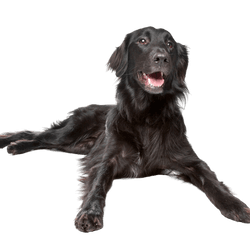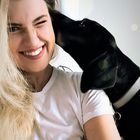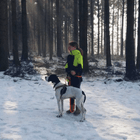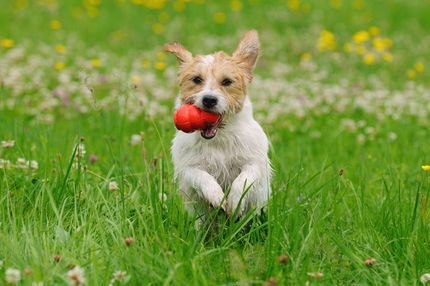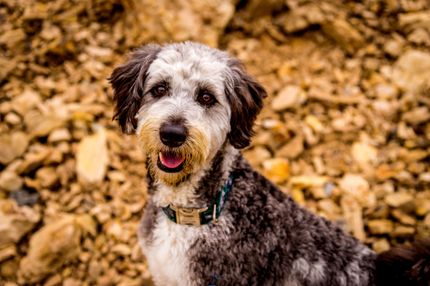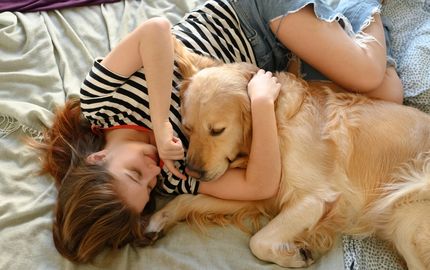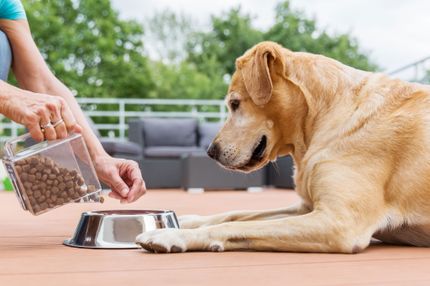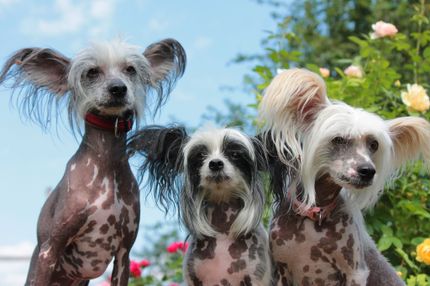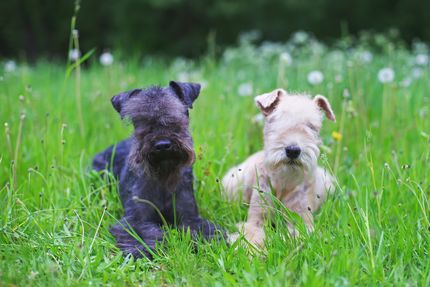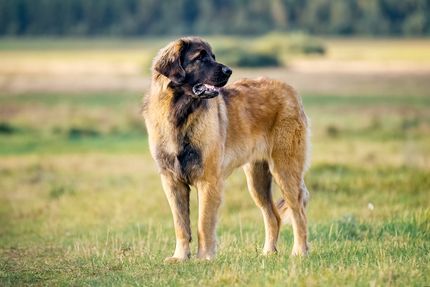Facts & Origin
Origin of the Flat Coated Labrador
The so-called Flat Coated Labrador is a cross-breed of two popular British hunting dog breeds: the Flat Coated Retriever and the Labrador Retriever. Both breeds originally come from the retriever type and were bred for work after the shot - i.e. for retrieving game. The idea behind the cross was to combine the friendly, easy-going nature of the Labrador with the elegant appearance and liveliness of the Flat Coated Retriever. The aim was to create an intelligent, active and family-friendly dog that was suitable for both sporting tasks and life in the home.
Name synonyms and terms
In everyday life, the hybrid breed is usually referred to as the Flat Coated Labrador or Flat Labrador Retriever, even though it is not officially a breed standard in its own right. In some regions, they are simply referred to as a retriever mix, although this is less accurate. The name usually only describes the parent animals and not any defined characteristics or lines.
Criticism of hybrid breeding
As with many deliberate crosses, the Flat Coated Labrador is also criticized by canine experts. As there is no fixed standard, the external appearance can vary greatly, as can the temperament. In addition, mixing two close relatives from the retriever group can have both advantages and disadvantages: Some fear that crossbreeding will not result in any significant improvement in health or character, but rather a reinforcement of typical breed-specific problems - such as joint problems or a high motivation to work, which can be challenging for an everyday dog.
Suitability as a family or companion dog
Despite these objections, the Flat Coated Labrador can be a wonderful family and leisure companion - provided it gets the necessary exercise. Both parent breeds are characterized by high intelligence, friendliness and willingness to learn, which is reflected in many of these mixed breeds. Anyone who keeps a Flat Coated Labrador should be active in sports or enjoy training, retrieving games or dummy work. Due to their sensitivity and love of bonding, they are less suitable for owners who are away from home a lot. Handled correctly, he is an affectionate, spirited and loyal dog who can excel in everyday life as well as in dog sports.
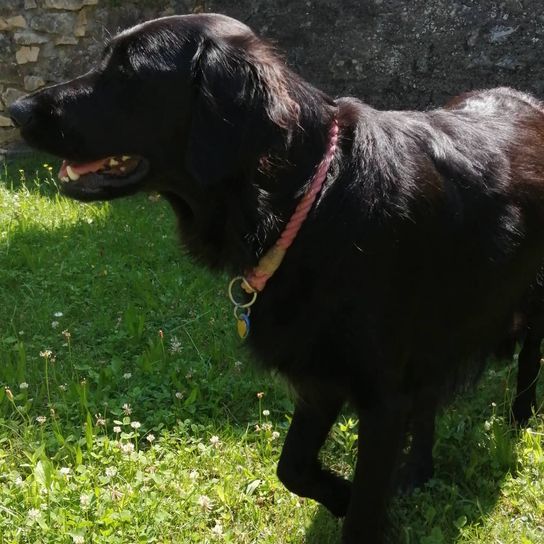
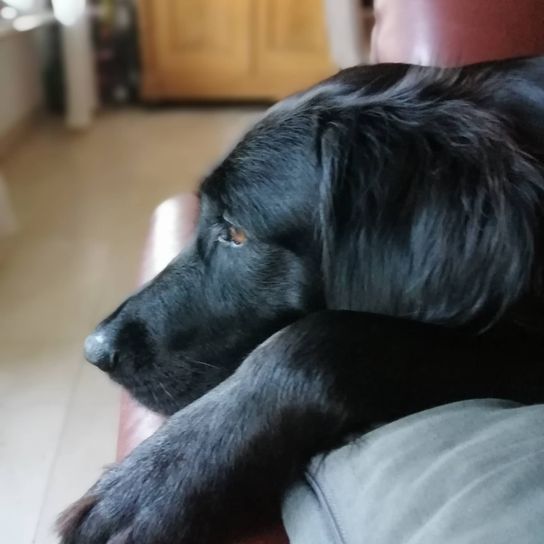
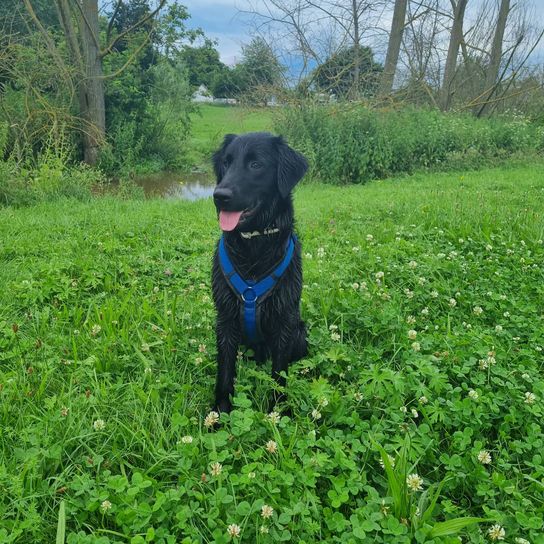
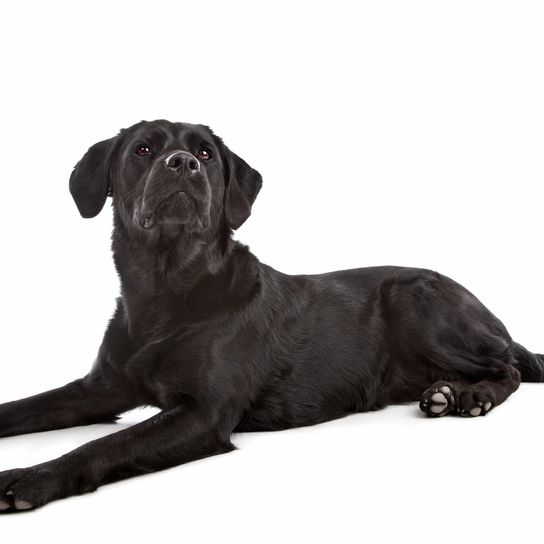
| Alternate Name | Flat Labrador Retriever |
| Origin | UK |
| Life expectancy | 10 - 14 years |
| Care requirements | low-maintenance |
| Activity level | average |
| FCI group | not recognised |
| AKC group | not recognised |
| KC group | not recognised |
More Flat Coated Retriever mixes
More Labrador Retriever mixes
Attitude, character and temperament of the breed
Character traits of the Flat Coated Labrador
The Flat Coated Labrador often combines the best of both retriever worlds in its character. From the Labrador he usually inherits a pronounced friendliness, patience and social compatibility, while the Flat Coated Retriever gives him a certain liveliness, playfulness and often also a cheerful carefreeness. In many cases, the result is an open, active and eager-to-learn dog that enjoys working and living closely with its people.
Typical of the Flat Coated Labrador is its affectionate nature - it constantly seeks to be close to its owner and wants to please. His intelligence and willingness to work make him easy to train, as long as he is handled consistently but sensitively. Many dogs of this mix are particularly cooperative, are well suited to retrieving games, dog sports or trick training and learn quickly. At the same time, their high energy levels can become a challenge if they are not sufficiently exercised - both physically and mentally.
In the family, the Flat Coated Labrador is often playful and fond of children, sometimes even clownish. He loves attention, but is not always a dog that is just quietly "with it" - he wants to actively participate. Anyone who can offer him this closeness and activity will be rewarded with a lively, charming and loyal companion who is not only a joy to be around outside, but also stands out in the house with his friendly nature.
Suitability and attitude
The Flat Coated Labrador is versatile and adapts to different living conditions:
- Families: thanks to his friendly and patient nature, he is ideal for families.
- Single owners: It can also be a loyal companion for individuals, provided it gets enough attention and exercise.
- Active lifestyle: Ideal for people who have an active lifestyle and can involve their dog in activities such as hiking, jogging or playing outdoors.
Character
Care and health
Since this is an active dog, there are some specific grooming and health considerations to keep in mind:
- Brushing: Brush once or twice a week to keep the coat clean and mat-free.
- Ear checks: Regular checks and cleanings can prevent ear infections.
- Health checks: As both parent breeds are prone to certain genetic diseases, regular visits to the vet are essential.
Possible diseases in the Flat Coated Labrador
As a hybrid of two very popular retriever breeds, the Flat Coated Lab rador has genetic predispositions that can originate from both the Labrador Retriever and the Flat Coated Retriever. Contrary to the widespread myth that mixed breeds are generally healthier, certain breed-typical diseases can even accumulate in the crossbreed if careful attention was not paid to health during breeding.
The most common health problems include joint diseases such as hip dysplasia (HD) and elbow dysplasia (ED). Both are widespread in the retriever line and can lead to pain, restricted movement and arthrosis in the long term. Patellar luxations - the popping out of the kneecap - also occur occasionally.
Special attention should be paid to cancer prevention in Flat Coated Labradors. Due to their breed, Flat Coated Retrievers are particularly susceptible to various types of cancer, including malignant histiocytic tumors, which are often aggressive. Under certain circumstances, this genetic weakness can also manifest itself in offspring with a Labrador component, especially if this predisposition is already present in the lineage.
Other possible diseases include eye diseases such as cataracts or progressive retinal atrophy (PRA) as well as heart disease. Ear infections are also more common in dogs with drooping ears and thick hair - regular checks and care are therefore important.
A responsible breeder will have the parent animals tested for relevant hereditary diseases and only breed with healthy, resilient lines. Anyone wishing to purchase a Flat Coated Labrador should therefore consciously choose quality over price and obtain comprehensive information about the health of the parent animals.

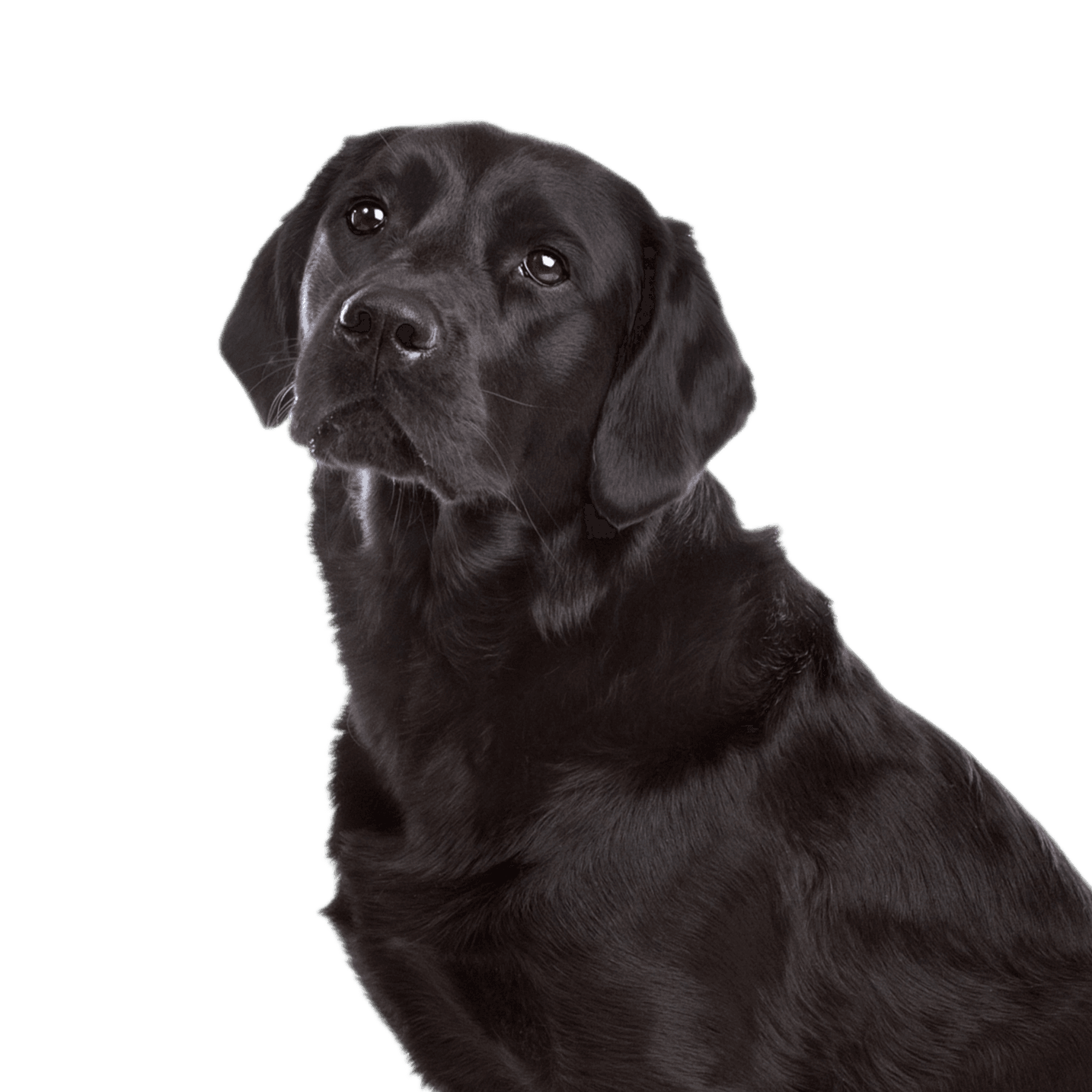
Possible appearance of the Flat Coated Labrador
The external appearance of the Flat Coated Labrador can vary greatly, as it is a mixture of two independent breeds, each with a distinctly different look. In many cases, there is a harmonious combination of the strong, athletic build of the Labrador Retriever and the elegant, slimmer silhouette of the Flat Coated Retriever.
A medium-sized to large dog is typical, reaching a shoulder height of around 50 to 65 cm and weighing between 25 and 35 kilograms. The coat is usually medium to long, shiny and slightly wavy - rarely completely smooth. It is often soft to the touch and is reminiscent of the silky top coat of the Flat Coated Retriever.
The most common coat colors are black and brown, sometimes with a slight sheen, occasionally with white markings on the chest or paws. Yellow or cream-colored variants are rarer, but possible if the Labrador parent carries this coloring. The head often has a noble shape with a long muzzle, the ears hang to the side of the head and are usually densely coated.
Overall, the Flat Coated Labrador often appears friendly, sporty and elegant, with an open, attentive expression and a cheerful, slightly playful demeanor. His movements are supple and persistent, which corresponds to his original purpose as a retrieving and hunting dog.
| Fur length | medium - short |
| Fur | flat coated |
| Ear shape | Floppy Ear - Triangle |
| Tail | fanned out - lang |
| Anatomy | strong, rugged, massive |
| Size ♀ | 55 - 60 cm |
| Weight ♀ | 25 - 32 kg |
| Size ♂ | 57 - 63 cm |
| Weight ♂ | 27 - 36 kg |
| Suitable For | - |
Known Diseases
Hip dysplasia (HD)
Hip dysplasia (HD) is a genetic condition in dogs where the hip joint is not shaped properly. This leads to pain, stiffness and restricted movement.
Elbow dysplasia (ED)
Elbow joint dysplasia is a chronic disease complex of the elbow joint of fast growing dog breeds.
Eye diseases
Often occur with allergies and intolerances.
Overweight
Often, unfortunately, the dogs very much under excess weight. But the dogs themselves are never to blame!
Joint damage
In some breeds, joint damage can occur later in life, affecting the musculoskeletal system.
FAQ
-
They can come in a variety of colors, including black, brown, yellow, gold and white.
-
These mixed-breed dogs are extremely intelligent, affectionate, playful and very energetic.
-
Training should be done consistently but with patience.
-
These mixed-breed dogs are very affectionate and need a lot of attention and care.

